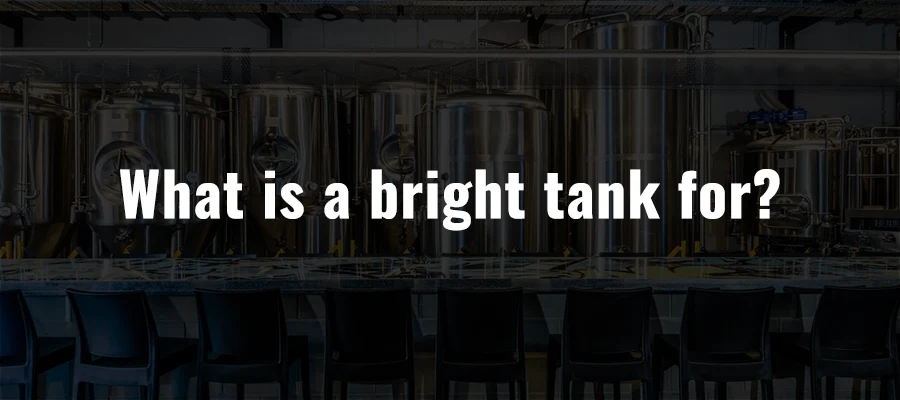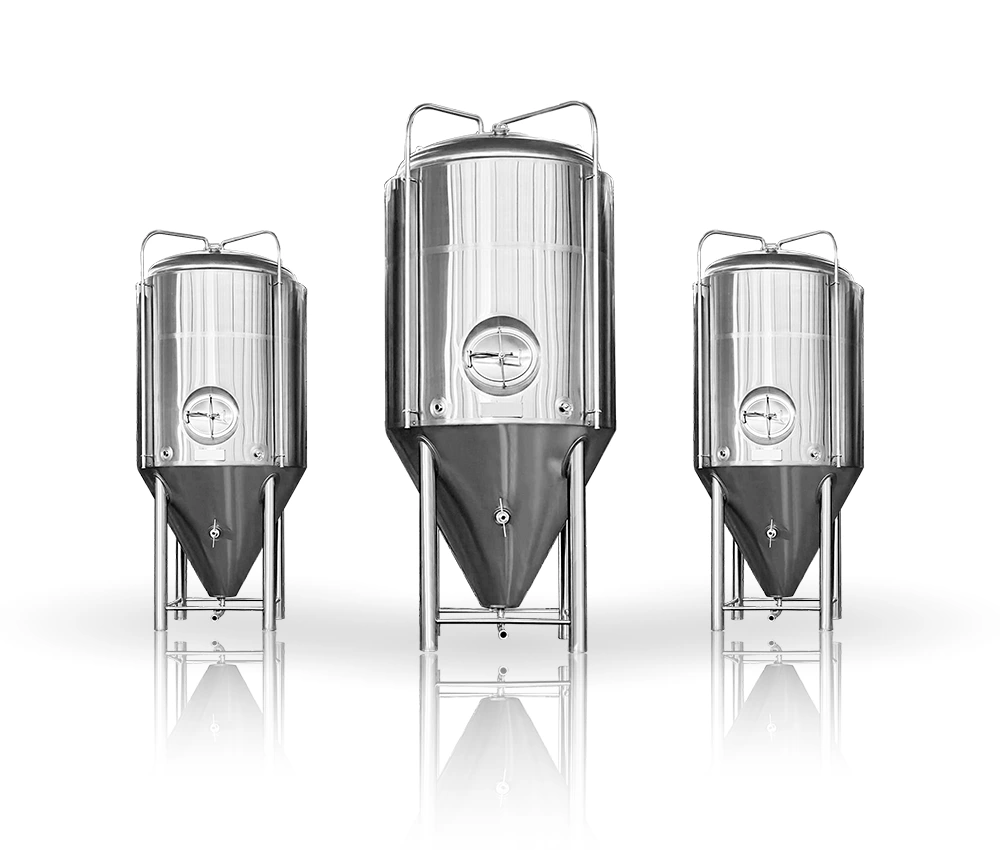What is a bright tank for?
A bright tank is a tank used to clarify beer and beer carbonation, and is also called a “brite tank”. In most breweries, the fermented beer will leave the fermentor, be filtered, and transferred to the bright tank for further clarification and maturation of the beer. If you want to force carbonation of beer, you can also do it in a bright tank. After carbonation, the beer can be barreled or bottled directly. Because the bright tank is the last stop before packaging, so you need to pay extra attention at this stage.
How does a bright tank work?
Although the engineering and functions of bright tanks are not as complicated as brewery equipment or bottling lines, these containers have important functions. A bright tank is a container placed after primary fermentation and filtration of beer. It can further mature, clarify and carbonate the beer, and can also be stored and used for packaging beer. In brewpubs, the bright tank can even be used as a service container, thus playing a dual role. The temperature in the bright tank is very important. The fermenter needs to be operated at 68-72°F, but the bright tank needs to be operated near the freezing point (32 °F) to ease the proper absorption of carbohydrates by beer.
Brew Clever!
Fermentation is one of the key parts of brewing. Even in the humblest home-based brewery, the fermentation tank is an essential part.
It doesn’t matter whether they are made of synthetical material or stainless steel, with pressure or without, cylindrical, conical or oval: Micet Group has the right container for every purpose.
Did you know: By increasing your fermentation capacity you can efficiently increase your brewing capacity?
We have fermenters ranging in sizes from 50L – 300HL and and manufactured to suit your brewing needs.
REQUEST A QUOTEAre bright tanks necessary?
It mainly depends on your brewing process and beer style. For pale beer, the clarification step cannot be omitted, you need to transfer the beer from the fermentation tank to the bright tank. If you brew a strong beer and don’t want the wine to be transparent, then you don’t need to use a bright tank. Also, unitank with carbon fossils has the same function as the bright tank, and you can also use unitank to clarify your beer.
Can you serve from a bright tank?
Of course, a bright tank is the last step in making beer. In these containers you can get clarified and drinkable beer, so you can use it as a serving tank to sell beer.
Why use bright tanks?
Some of our customers will ask why they want to use the bright tank? Why not choose to buy more Unitank (fermentation tank)? Although different customer requirements and brewing methods are different, we still hope to help you answer this question.
1. Release fermenter
If you need to pack beer, you usually need a brite tank for every 4-5 fermentation tanks. Beer needs to be stored in the fermentation tank for 10-20 days, while it only needs to be stored in the bright tank for 2 days. This is to make the beer clear and to carbonate the beer.
2. Clarified and complete transfer yeast
The bright tank can help clarify the beer, but also allows you to transfer yeast in a more complete way. When you pull the yeast from the fermentation tank, you will leave a layer of yeast on the fermentation tank. Due to the similar charge, the yeast prevents other yeasts from accumulating, which has a significant effect on the clarity of the beer. The brite tank has a butterfly-shaped bottom, which makes the final flocculated yeast stay at the bottom and cannot enter the package or the final beer of draft beer.
3. Easy to measure the volume of canned beer
Usually, you get 100% beer in the Brite tank, which helps you plan the packaging. Conical storage tanks always leave a part of the beer. This is because the content of yeast sediment will vary. You never know how much beer you want to drink. Due to the known volume, the bright tank can also be easily determined for taxation.





